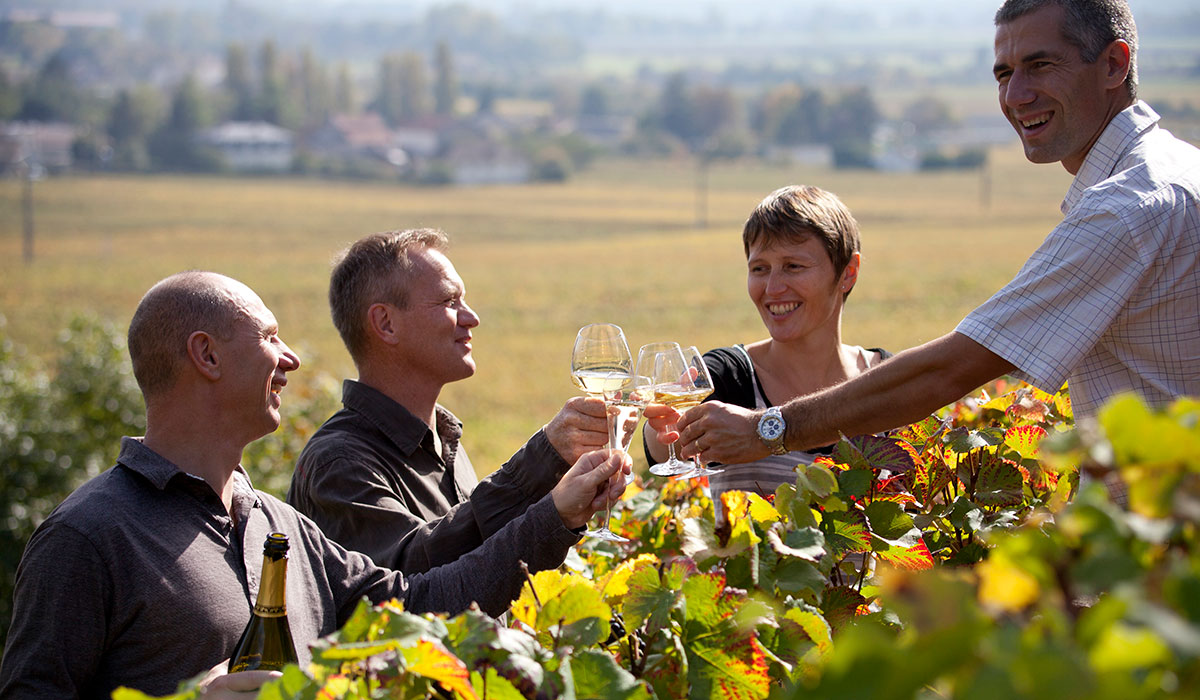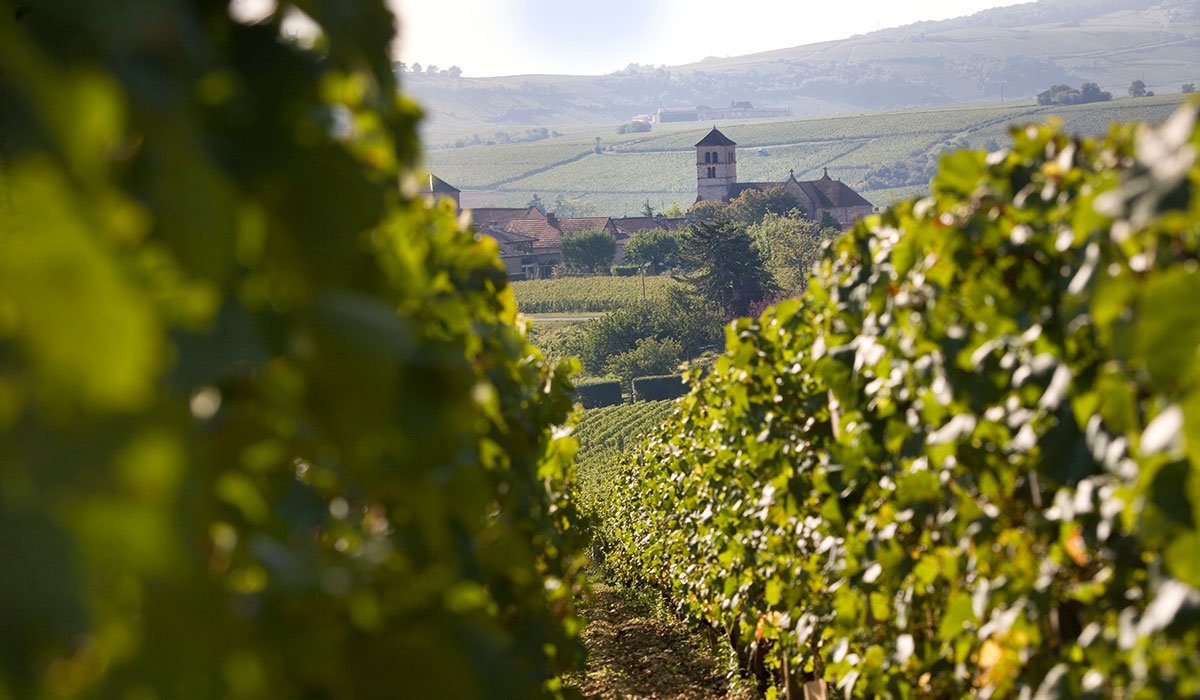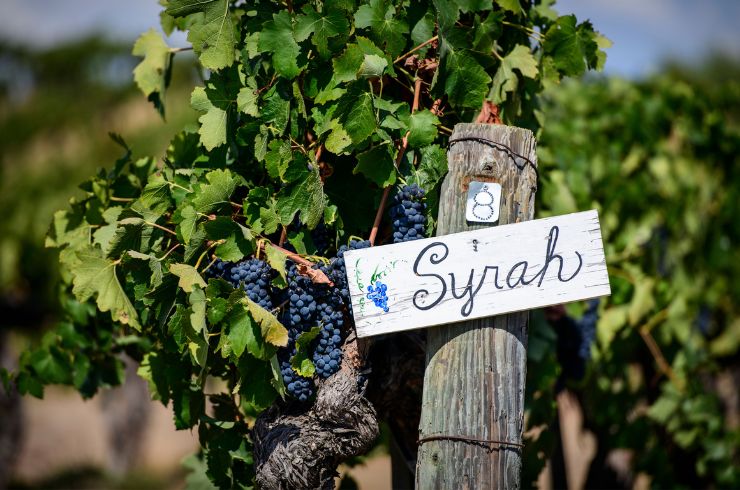-
There is more to Bourgogne than big names like Romanée-Conti. Thanks to the skill of producers working across the length and breadth of this region and within all sorts of classifications, you can find quality at accessible prices if you know where to look. Anne Moreau, chair of the communications commission for the Bourgogne Wine Board, says that quality is not a question of price. “Indeed, thanks to the know-how of producers, the quality in Bourgogne has never been as good as it is right now – for the last 20 years, a great deal of attention has been put on the vineyards, protection of the soil, care for the vines and land,” she says.
- Marsannay
- Fixin
- Savigny-les-Beaune
- Saint-Aubin
- Rully
- Givry
- Montagny
- Saint-Véran
- Pouilly-Vinzelles
- Saint-Bris
Contrary to popular opinion about the rarity and cost of Bourgogne wines, the excellent styles ahead can be found for around $50 and sometimes less – seek them out on your next bottle shop run.

Image © BIVB / armellephotographe.com
This northernmost appellation of the Côte de Nuits has long been recognised as one of Bourgogne’s hidden gems, and it’s unique in that it’s the only Village appellation that produces red, white and pink wines. Marsannay reds have the generosity of red fruit flavour and length that this part of Bourgogne is famed for, with the capacity to age. The whites have citrus and blossom aromas and a mouth-filling, persistent palate, while the rosés are fresh, fruity and ideal for summer.
Producers to try: Domaine Bart, Sylvain Pataille, Domaine Trapet
Below Marsannay and next door to the hallowed vineyards of Gevrey-Chambertin, Fixin is primarily red wine country, with a smaller focus on whites. It’s home to six Premier Cru Climats, and if you enjoy aged red wines, it’s a great place to look. Fixin pinot noirs are typically complex, structured styles that open up after time in the cellar, developing into flavoursome, delicately textured wines.
Producers to try: Louis Jadot, Domaine Berthaut-Gerbet, Phillippe Collotte
This appellation is in the northern part of the Côte de Beaune district, not far from Grand Cru Climats like the hill of Corton. The white and red wines of Savigny-les-Beaune tend to fly under the radar compared to neighbouring places, which means it presents great value. Whether you prefer graceful and ethereal or spicy, expressive styles, this appellation has it all.
Producers to try: Simon Bize et Fils, Domaine Chandon de Briailles, Chanterêves
Another that’s in the Côte de Beaune, further south alongside the appellation of Montrachet, is Saint-Aubin. This picturesque place produces crisp, ageworthy whites and, to a lesser degree, vivid, silky reds. There are 30 Premier Cru Climats in the area and wonderful Village wines to be found, too. Saint-Aubin is an excellent village to look to for an introduction to Bourgogne.
Producers to try: Marc Colin et Fils, Hubert Lamy
Looking to more southerly districts is a smart move for money-savvy drinkers. This area is called the Côte Chalonnaise, and it’s a favourite of Bourgogne lovers in the know for the cracking value and wines it provides. Rully is one of its leading appellations, with a reputation for crisp, minerally whites and supple, lively reds. This historic village provides a range of Premier Cru and Village wines that offer drinking pleasure and insight into the beauty of Bourgogne.
Producers to try: Joseph Drouhin, Domaine Ninot, Domaine Vincent Dureuil-Janthial
Another that’s in the Côte Chalonnaise is Givry. This appellation focuses predominantly on red wines and includes 38 Premier Cru Climats. Givry reds are brilliant crimson with classic pinot noir aromas of violets, berries, and sweet and earthy spice. They’re a top style for mid-term cellaring of three to five years, after which time they’ll become even more supple and delicious. Givry whites are also worth a look for their beautiful bouquet of honey, lemon, lily and lime, leading into a delicate palate with balanced acidity that will see them stand the test of time.
Producers to try: Domaine Joblot, Domaine François Lumpp
The most southerly appellation of the Côte Chalonnaise and home to an incredible 49 Premier Cru Climats, Montagny is a chardonnay-dominant district producing pale gold wines with intoxicating floral scents and fresh, alluring flavours. Refined and delicate, but with the structure for long ageing, Montagny whites are a wonderful entry point to the lauded Bourgogne style.
Producers to try: Louis Latour, Stephane Aladame

Image © BIVB / armellephotographe.com
Further south still is the Mâconnais, the largest region of Bourgogne. This district’s Saint-Véran appellation produces some very complex and structured white wines that are exceptionally well-priced. Saint-Véran chardonnays have subtle fruit and floral aromas with notes of almond, hazelnut and sweet spice, and a palate that is flinty, lively and well-rounded.
Producers to try: Domaine Cheveau, Maison Verget, Domaine Barraud
Also in the Mâconnais, Pouilly-Vinzelles produces white wines with drive and length. Its chardonnays have sweet floral and stone fruit notes, and evolve into nutty, honeyed, toasty wines over time. This opulent, fleshy style, typically aged in oak, is balanced by bright minerality.
Producers to try: Domaine Trouillet, Domaine de la Soufrandière
While geographically separate, Chablis and Grand Auxerrois are important districts to Bourgogne, best known for their crisp, minerally whites. For the most part, traditional varieties are used around these regions, but Saint-Bris is unique in that it focuses on sauvignon. It was because of a twist in history that the grape was planted here centuries ago, and its limestone soils and climate are ideal for the variety. Saint-Bris produces bright, citrus-driven sauvignon styles with lifted aromatics.
Producers to try: William Fèvre, Domaine Goisot
Discover more Bourgogne wines.
Top image: Saint-Bris © BIVB / Sébastien Boulard
Latest Articles
-
News
The power of perspective: Ryan Ponsford's Entropy
2 Dec 2025 -
Events
Halliday Wine Academy: Wine Immersion Tours
30 Nov 2025 -
Travel
Scenic's Southern France and Bordeaux river cruises are tailor made for wine lovers
30 Nov 2025 -
News
What’s in a name? The etymological origins of popular grapes.
30 Nov 2025



